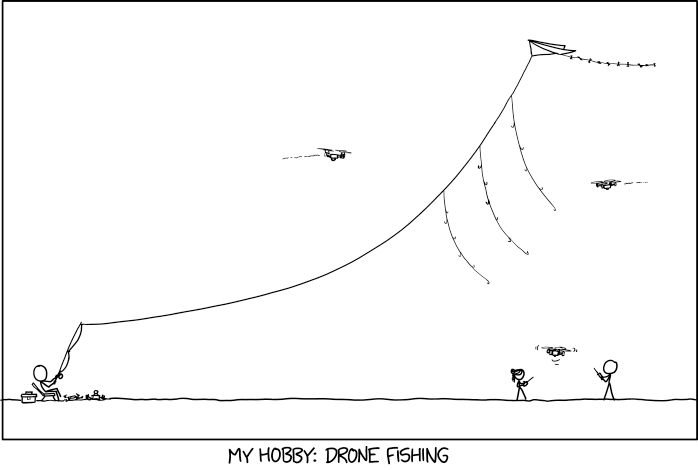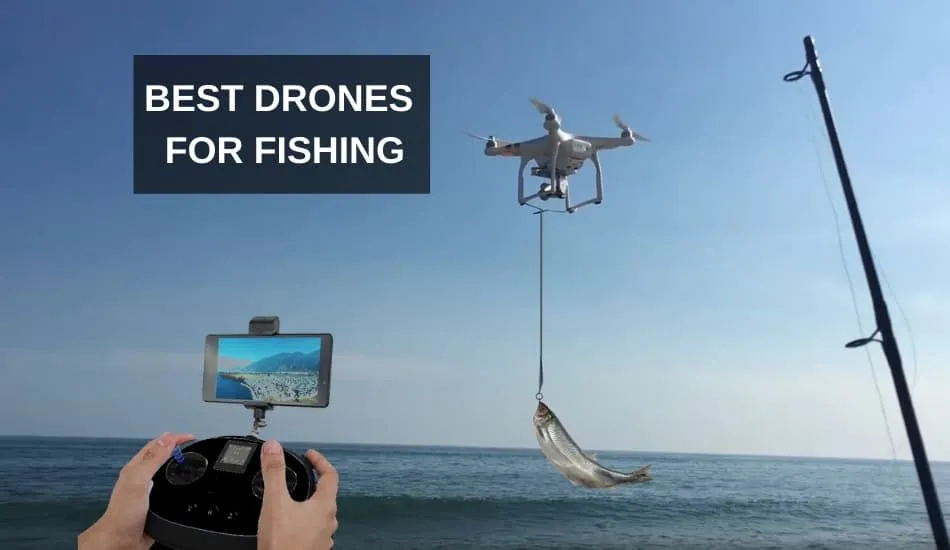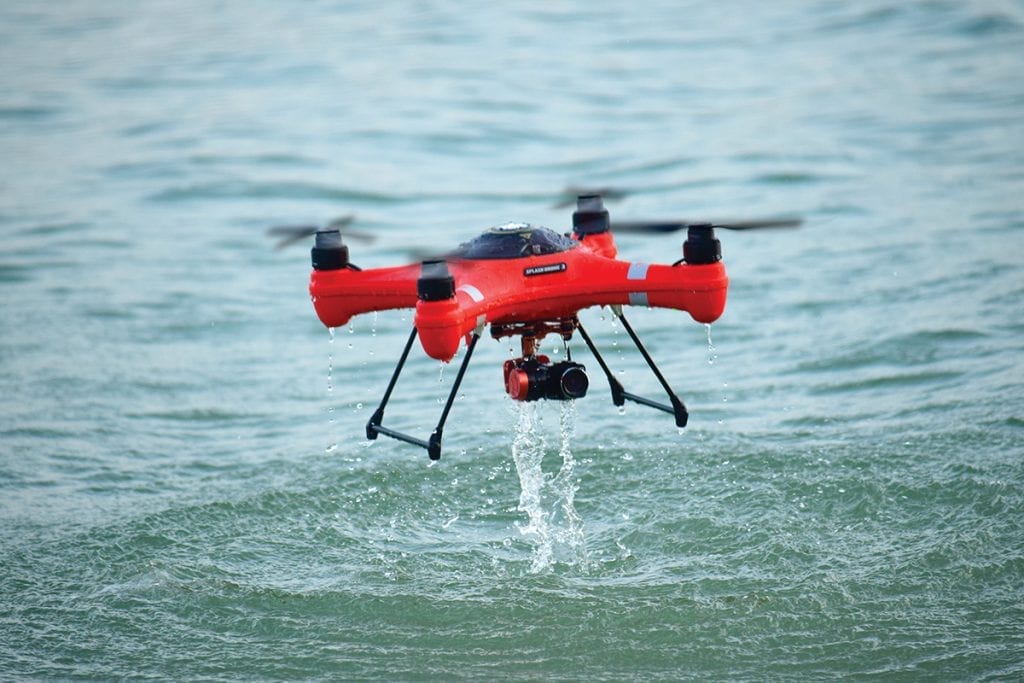
A drone can be used to view the water around your property if you're a keen fisherman living in Australia. A drone can have many features such as an angle adjustable camera and GPS positioning system. You can also purchase fishing lines, which are stable and safe. One such example is the SKY RIGGER drone.
SKY RIGGER is an unmanned fishing line.
The SKY RIGGER allows you to fish remotely from your drones using a flexible fishing line system. Two rotating leg clamps allow the system to be attached to a variety of drone models. The release mechanism uses a bayonet connection and a camlock arm. This allows for quick opening of the line clamps. The Sky RIGGER does not require batteries, unlike other drones. It can safely accommodate all types of fishing techniques.
The SKY RIGGER includes an automatic release system for fish that strike your fly. You can also manually release the line using your hand or rod. This feature can be found on all models. It is strongly recommended that you first purchase a Phantom 3 before you purchase the new SKY RIGGER. Here are some pros & cons of the new line.
It comes with a mechanical payload.
One of the most important features of a good drone is its mechanical payload release. Many of them allow anglers to quickly and easily release their fishing line. However, some models do not have a release mechanism. To release the drone, one must "yank" the fishing lines. This can be an inconvenient process, especially for people who aren't comfortable using their hands to release the line.

A payload release mechanism is also an important feature. When a fish strikes, the payload must be able release the line from the drone. Before you try this method, it is important that you practice catch-and-release fishing. The fish cannot be pulled to shore and then released back into the water. The DJI Phantom drone has been reported to have excellent results by many people. However, the technology is not yet up to the standard of other fishing drones.
It has a GPS positioning system
Rippton, a joint venture between Australia and the Netherlands that specializes on technology-oriented fishing products, is called Rippton. It was established to help anglers improve their success rates and create products that will enhance the enjoyment of fishing. Rippton’s Mobula drone comes with a GPS position system and remote release. The Mobula is able to hold bait on the surface, resist kite clips and is environmentally friendly.
It weighs only 3 pounds and can fly for as long as 18 minutes. The high-tech GPS system allows it to be controlled up to 2,000 feet away. It has a range of 1000 meters, or half a mile, and is equipped with intelligent flight modes. Its point-of-interest feature allows it to capture high quality images of its surroundings. You can enjoy stunning views of fish through its high-resolution lens.
It features a failsafe function
The Aerokontiki fisherman drone comes with a failsafe feature: it monitors the battery level and releases the fishing line when needed. It will return to dry land if the battery runs out and continue its mission. It has industrial-grade flight controls and can operate wherever it goes without recalibration. The drone can be used in even the most challenging water spots, and is waterproof.

FAQ
What is the law on drones flying over private property?
Recently, the FAA released new rules for commercial drone operations. These rules apply only to UAVs weighing less than 55 pounds and flying below 400 feet above ground level. Commercial operators need to register with the FAA in order to obtain a license. When operating in restricted areas or near airports, they will need to obtain permission from the local authorities.
You can fly a drone as high as you like without a license.
The FAA doesn't limit how high you can fly your drone. The FAA does require you to register unmanned aircraft systems (UAS), which include the registration number of your model, weight and size, serial numbers, manufacturer's names, date manufactured and other information.
What laws are there regarding drones flying?
In the United States, the Federal Aviation Administration (FAA) regulates all aspects of drone operations. A certificate issued by the FAA is required to commercially operate a drone. First, you need to take a course about piloting and pass an exam. The agency will require you to pay a fee.
Is it safe and legal to fly a drone when driving?
Drone flying while driving can be dangerous as you may collide with another vehicle or object. You also risk hitting pedestrians or other animals. A collision with power lines, trees, buildings, or power lines could cause serious damage to your vehicle.
Can my drone be flown around my neighbourhood?
Yes! These are known as UAVs (unmanned air vehicles). There are many kinds of drones today. They range from small quadcopters, to large fixed-wing planes. The FAA recently released new rules for commercial UAV use, meaning that they are now legal to fly for business purposes. It is important to remember that UAVs are not allowed near airports.
What are the rules of operation for drones?
Register your drone with the FAA. The registration process involves providing information about your drone, such as its weight, size, battery power, and frequency. It also requires you to obtain an identification number from the FAA.
Can I fly my drone within my local park
You can fly drones in parks around the globe. Due to safety concerns, certain countries don't allow you to fly drones in parks. You can fly drones legally in these places.
Statistics
- Research and Markets predict a growth rate of 51.1% over the next five years. (thedroneu.com)
- According to the multiple listing service (MLS), houses and apartments with drone photographs are up to 68 percent more likely to sell than those without pictures. (thedroneu.com)
- According to ZipRecruiter, the minimum hourly wage of drone pilots is $20. (thedroneu.com)
External Links
How To
How to Fly Drones With Beginners
A drone is an unmanned aerial vehicle that can be remotely controlled and used for surveillance, aerial photography, film production, research, and other hobby purposes. Drones are a technology that has been around since World War II. DJI's Phantom series of quadcopters was the first to be commercially used. There have been many types of drones since then, including beginner-friendly drones like the Parrot AR Drone 2.0 and professional-grade multi-rotor crafts like the DJI Mavic Pro.
There are many ways to fly a drone.
-
Remote control - This method uses a control device attached to your hand, which enables you to steer the drone through its flight path. There are two main types: Joysticks (like a radio), and On/Off switches (like an alarm clock).
-
Manual Control - This method uses a smartphone app to remotely control the drone using GPS coordinates. The app will give you instructions.
-
Autonomous Flight - This method involves leaving the piloting duties to the drone itself. It allows the drone to fly independently without any human intervention. The drone must be equipped with a camera and sensors that can capture images and data in order to fly autonomously.
-
Triggered Flight - This method is similar to manual control, except the pilot manually sets up a preprogrammed route, and the drone follows that route until it reaches the endpoint. After the preprogrammed route is complete, the drone will automatically land and return to its base.
-
Landing Gear - Some drones come equipped with landing gear that allows them to land safely if they lose power or run out of battery during flight.
-
Goggles - Some pilots wear goggles to protect themselves from debris while operating.
-
Camera - Some drones are equipped with cameras allowing you to capture photos and videos from above.
-
Obstacles - Some drones can be equipped with obstacle avoidance systems that prevent them from crashing into obstacles.
-
Speed - Some drones reach speeds exceeding 40 mph.
-
Battery Life: Most drones have a battery life of between 20 and 30 minutes depending on how many power sources you use.
-
Some drones are capable of traveling up to 30 miles depending upon their make and model.
-
Power source - Not all drones can use an external power source. Others can run on internal batteries.
-
Weight - Some drones are lighter than others, while some models can weigh as much as 4 pounds.
-
Size - The size of drones varies from small, easily carried devices to more substantial crafts that weigh in excess of 50 pounds.
-
Price - High-end drones can go for thousands of dollars, while low-cost models start at $100.